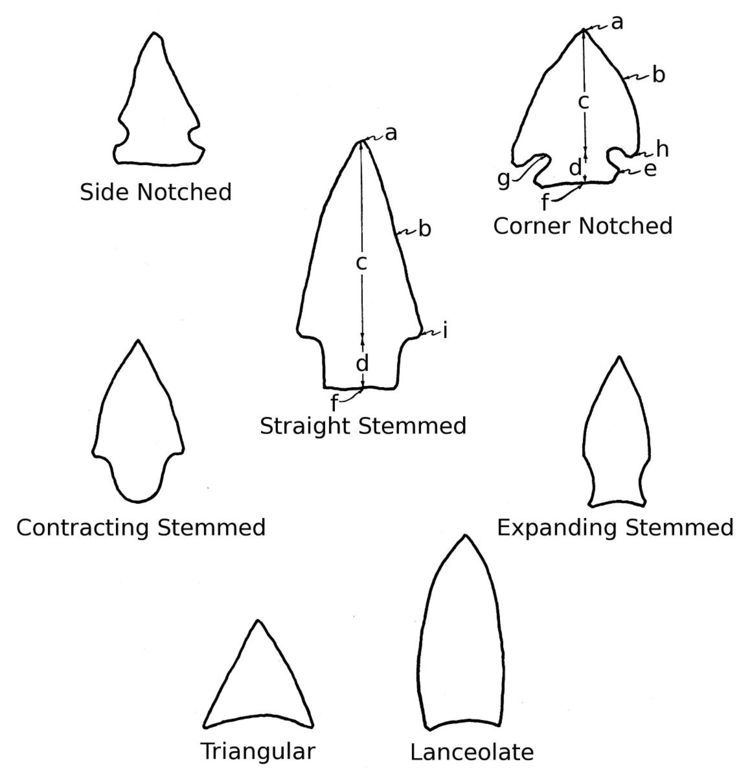 | ||
In archaeological terms, a projectile point is an object that was hafted to a projectile, such as a spear, dart, or arrow, or perhaps used as a knife.
Contents
Stone tools, including projectile points, can survive for long periods, were often lost or discarded, and are relatively plentiful, providing useful clues to the human past, including prehistoric trade. Scientific techniques exist to track the specific kinds of rock or minerals that used to make stone tools in various regions back to their original sources. Occasionally, projectile points made of worked bone or ivory are found at archaeological sites. In regions where metallurgy had emerged, projectile points were made from copper, bronze, or iron. In North America, some late prehistoric points were fashioned from copper that was mined in the Lake Superior region and elsewhere.
History
A large variety of prehistoric arrowheads, dart points, and spear points have been discovered. Flint, obsidian, quartz and many other rocks and minerals were commonly used to make points in North America. The oldest projectile points found in North America were long thought to date from about 13,000 years ago, during the Paleo-Indian period, however recent evidence suggests that North American projectile points may date to as old as 15,500 years. Some of the more famous Paleo-Indian types include Clovis, Folsom and Dalton points.
Types
Projectile points fall into two general types: dart/spear points, and arrow points. Larger points were used to tip spears and atlatl darts. Arrow points are smaller and lighter than dart points, and were used to tip arrows. The question of how to distinguish an arrow point from a point used on a larger projectile is non-trivial. According to some investigators, the best indication is the width of the hafting area, which is thought to correlate to the width of the shaft. An alternative approach is to distinguish arrow points by their necessarily smaller size (weight, length, thickness).
Projectile points come in an amazing variety of shapes and styles, which vary according to chronological periods, cultural identities, and intended functions.
Typological studies of projectile points have become more elaborate through the years. For instance, Gregory Perino began his categorical study of projectile point typology in the late 1950s. Collaborating with Robert Bell, he published a set of four volumes defining the known point types of that time. Perino followed this several years later with a three-volume study of "Selected Preforms, Points and Knives of the North American Indians". Another recent set of typological studies of North American projectile points has been produced by Noel Justice.
